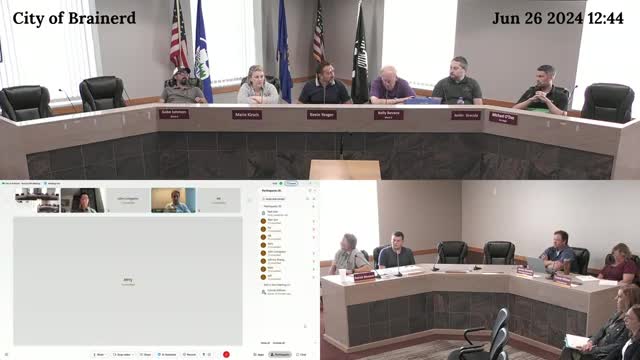Council faces critical decision on contentious agreement
June 26, 2024 | Brainerd City, Crow Wing County, Minnesota

This article was created by AI summarizing key points discussed. AI makes mistakes, so for full details and context, please refer to the video of the full meeting. Please report any errors so we can fix them. Report an error »

In a recent government meeting, officials faced a critical decision regarding an amendment to an existing agreement. The chairperson emphasized the need for a conclusive decision, stating that the group would not leave the meeting without reaching a consensus, despite evident divisions among members.
The chair outlined two potential courses of action: either to approve the amendment or to direct staff to issue a 30-day default letter. The urgency of the situation was underscored by the presence of stakeholders in attendance, who were awaiting a resolution.
After a brief discussion, a motion was made to approve the amendment. However, the motion did not receive a second, prompting a shift in strategy. Another member then proposed a motion to deny the agreement, indicating a clear pivot in the group's approach to the contentious issue.
The meeting highlighted the challenges of reaching agreement in a divided assembly, with the chairperson committed to ensuring that all voices were heard and a decision was made before adjournment. The outcome of this discussion remains pivotal for the involved parties, as they await the final decision on the amendment.
The chair outlined two potential courses of action: either to approve the amendment or to direct staff to issue a 30-day default letter. The urgency of the situation was underscored by the presence of stakeholders in attendance, who were awaiting a resolution.
After a brief discussion, a motion was made to approve the amendment. However, the motion did not receive a second, prompting a shift in strategy. Another member then proposed a motion to deny the agreement, indicating a clear pivot in the group's approach to the contentious issue.
The meeting highlighted the challenges of reaching agreement in a divided assembly, with the chairperson committed to ensuring that all voices were heard and a decision was made before adjournment. The outcome of this discussion remains pivotal for the involved parties, as they await the final decision on the amendment.
View full meeting
This article is based on a recent meeting—watch the full video and explore the complete transcript for deeper insights into the discussion.
View full meeting
